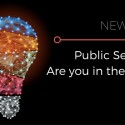4 Steps to Better Application Performance
For governments seeking to improve their application performance, here’s a proven approach to achieve those results..

For governments seeking to improve their application performance, here’s a proven approach to achieve those results..

Aside from budgets, cultural barriers pose one of the greatest challenges to introducing new technologies and new ways of thinking into any agency. There’s a certain way that people have always done things, and sometimes learning a new way can cause angst or pushback. So how do you foster an environment where people are openRead… Read more »

While the benefits of big data in government are tremendous, the implementation is proving very challenging because legacy infrastructure cannot handle the demanding workload. Here’s how multi-tiered flash storage systems can help.

In 2014, GSA launched a division dedicated to developing workforce analytics deliverables. The first of those deliverables was an interactive dashboard that visualized answers to common HR questions about new hires, separations, onboarding and more. Now, GSA has a turnover model for predicting future employee losses.

Free and professional development aren’t two words you always hear in the same sentence. But we sat down with the head of one governmentwide program aimed at breaking down silos and connecting employees with new opportunities.

There are countless stories of agencies using analytics to improve online services and better track internal metrics. But the path to a successful big data analytics implementation requires proper long-term planning that addresses growth, flexibility, agility and the evolution of technology.

Analysts can work more efficiently now because they aren’t flooded with a sea of security alerts that realistically can’t all be addressed at the same time. Using analytics, they can prioritize anomalies and understand what data is leaving the network in an unauthorized way.

NASA Goddard has given the term “bill of rights” an entirely new meaning and redefined the way new employees are treated on their first day at work.

Take this short quiz to find out.

Data shows that millennials are leaving government at faster rates than Gen Xers and baby boomers. And although the outlook seems bleak, agencies should use this data to fuel change and new ideas that keep all employees, especially newly hired millennials, engaged and inclined to stay on board.
Notifications